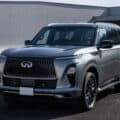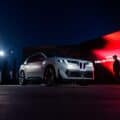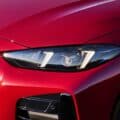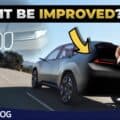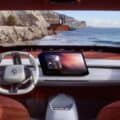In 2004, BMW was the first automotive manufacturer to use a color Head-Up Display which projected driving-related information directly in the driver’s line of sight. The next generation Head-Up display arrived in 2011 and featured this time even more full-color graphics, a significant improvement over the first generation.
As part of the BMW Innovation Days Connected 2011 document issued to the public, the company begins to reference a new generation Head-Up Display that acquires “contact analogue” functionality. BMW says that “this is a technique whereby virtual “markings” are superimposed on real objects in the external environment, so that navigation information or information from the driver assistance systems can be displayed at exactly the right points on the driver’s view of the road scene. Navigation instructions can be blended into the road, and vehicles or safety-relevant objects can be highlighted or marked in context.”
In the smartphones and mobile world, contact analogue stands for Augmented Reality and can be seen integrated in many mobile apps.
BMW also says the contact analogue displays are a special form of augmented reality. The displayed information is integrated into the external environment in the correct perspective and at the actual point or points in the scene to which it relates, so that effectively the information appears to be “attached” to the external objects.
Some of the advantages of contact analog displays are the ability to display information right in the driver’s direct line of sigh, with the same information overlaid on the objects. The driver continues to remain focused and distractions are avoided.
“With the contact analogue HUD, we place the information at exactly that point in the driver’s field of view where it belongs and is required. The driver no longer has to correlate abstract information to the concrete driving situation. Since the display is directly congruent with the real world, we can also selectively direct the
driver’s attention to specific information or hazards, so that he can respond quickly and in an appropriate manner.” (Dr Bernhard Niedermaier, Head of Human-Machine Interaction at BMW Group Research and Technology)
To further demonstrate the advantages of this new technology, BMW shares two scenarios:
“The first scenario shows the possibilities of contact analogue display applications in the field of in-car navigation. Whenever a navigation manoeuvre needs to be performed, such as turning at an intersection, the system presents the information in such a way that it appears to blend with the road itself. The driver can keep his eye on the road throughout, and intuitively drives in the right direction.
Since the driver is better informed, he is able to drive more proactively and also more confidently.
Contact analogue navigation works like this: the navigation system calculates the optimal route based on digital road map information. If lane-level information is available, the route is further refined and the necessary lane manoeuvres are computed. Positioning information continuously supplied by GPS and vehicle
sensor systems allows the vehicle to detect the lane it is currently travelling in and compare it with the optimal lane for the given route. If the vehicle is not in the correct lane for an upcoming manoeuvre, the system computes a 3D model of the road situation ahead using the signals from the camera system, and superimposes the instructions congruently on the external scene.
A second application scenario for contact analogue displays is in the field of driver assistance systems. Here the contact analogue functionality provides the driver with a better understanding of what is going on around him and makes it easier to absorb highly specific instructions. For example if the driver activates Active Cruise Control with collision warning, the system not only shows the driver – in the real-world environment – which vehicle is currently serving as the “lead vehicle”, it also shows the preset following distance, superimposed directly onto the road surface. Instructions to the driver to intervene are therefore more easily and more quickly understandable. Other information that could potentially be “projected” in this way includes lane boundaries, lane departure warnings, nighttime highlighting of pedestrians not readily visible to the driver, and even recommendations for evasive manoeuvres into other lanes, complete with marked-out paths.”
BMW is currently performing tests inside simulators and there is no official word on when the technology will be available in mass production vehicles.














